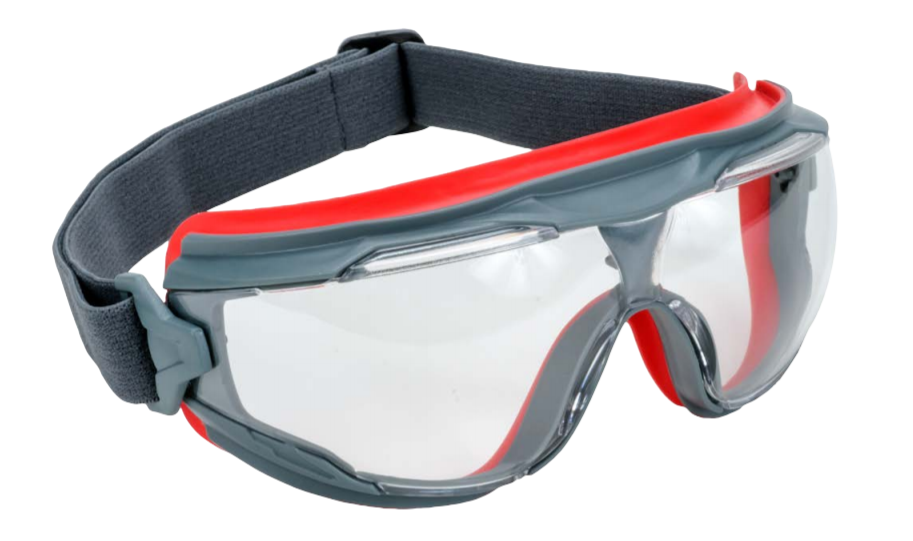 Technical Data Bulletin
Technical Data Bulletin
Eye Protection for Infection Control
US CDC/NIOSH Recommendations
The US National Institute for Occupational Safety and Health (NIOSH) is part of the US Centers for Disease Control and Prevention (CDC) and has provided the following information concerning the use of goggles, face shields, safety glasses, and full face respirators for infection control purposes in their publication Eye Protection for Infection Control.
CDC/NIOSH recommends eye protection for a variety of potential occupational exposure settings where workers may be at risk of acquiring infectious diseases via ocular (eye) exposure. Eye protection is intended to provide a barrier to infectious materials entering the eye and is often used in conjunction with other personal protective equipment (PPE) such as gloves, gowns, and respirators.
Goggles
Goggles are designed to fit snugly, but not necessarily seal around the wearer’s eyes. CDC/NIOSH has stated1 : “appropriately fitted, indirectly-vented goggles* with a manufacturer’s anti-fog coating provide the most reliable practical eye protection from splashes, sprays, and respiratory droplets. However, to be effective, goggles must fit snugly, particularly from the corners of the eye across the brow. While highly effective as eye protection, goggles do not provide splash or spray protection for other parts of the face.
* Directly-vented goggles may allow penetration by splashes or sprays; therefore, indirectly-vented or non-vented goggles are preferred for infection control.”
Face Shields
Face shields are designed to help protect portions of the wearer’s face to certain exposures. While goggles help protect a wearer’s eyes from splashes, sprays, and droplets, a face shield can help reduce exposure to both the eyes and other facial areas.** Face shields, whether disposable or reusable, should cover the front and sides of the face. This will help reduce the possibility of splash, sprays and droplets from going around the edges of the shield and reaching the eyes or other facial areas. Face shields alone may not provide sufficient eye protection from airborne droplets or aerosols, CDC/NIOSH recommends that they be used with goggles where airborne infection control precautions are required.
** Per CDC/NIOSH - Disposable face shields for medical personnel made of light weight films that are attached to a surgical mask that are relatively flat or fit loosely around the face should not be relied upon as optimal protection.
Safety Glasses
Safety glasses provide impact protection, but do not provide the same level of splash or droplet protection as goggles and generally should not be used for infection control purposes.
Full Face Respirators
In the event respiratory protection along with eye protection is needed, a full facepiece respirator or powered air purifying respirator (PAPR) may be selected in lieu of goggles and half face respirators. A full facepiece respirator or PAPR can be used as primary eye protection for splashes, sprays, and droplets that may be encountered in an infection control situation. A PAPR hood or headcover does not provide impact protection although there are certain rigid headtops that will.
Infection Control Information Sources
Please refer to the latest information from sources such as the World Health Organization (WHO), the US Centers for Disease Control and Prevention (US CDC), and the European Centres for Disease Prevention and Control (ECDC) regarding selection, use, maintenance and cleaning of personal protective equipment for infection control.
3M Protective Eyewear Options
Unvented and indirectly vented goggles, when properly selected and used, help provide eye protection from splashes, sprays, and droplets.
3M splash goggle series/models (some series/models may not be available in all areas of the globe):
- Fahrenheit Splash
- Goggle Gear (GG) 500
- Lexa Goggle Gear Splash Goggle
Face shields should wrap around the face to the point of the ear. 3M face shield options include H8A ratchet headgear with a WP96 clear polycarbonate face shield. North America options include the H8A and WP96 above and a complete kit (part #82521-10000) that includes an H8A ratchet headgear along with a WP98 clear polycarbonate face shield that includes an HCP8 chin protector.
If a face shield is used, a primary means of eye protection, such as goggles is still required. Ensure that goggles do not hinder the face shield from coming all the way down, lowprofile options are available if needed.
Protective Eyewear Cleaning and Disinfection Options when used for Infection Control
The 2008 US CDC publication Guideline for Disinfection and Sterilization in Healthcare Facilities2 (updated May 2019) includes information on disinfecting equipment and surfaces potentially contaminated by corona viruses. The US CDC investigated many chemicals and cited several chemical germicides as being effective for corona viruses, when used as indicated in the product user instructions. Bleach (sodium hypochlorite) was one of these products.
Effective after a 1-minute contact time: - Sodium hypochlorite (at a free chlorine concentration of 5,000 ppm - typically 1:10 ratio of bleach to water)
Your facility should review this information thoroughly prior to selecting this disinfecting product for your equipment and specific application. Follow the hygiene and infection control practices established by your employer for the targeted organisms, including or for coronavirus. Please note that 3M has not evaluated the effectiveness of this agent with regards to inactivating viruses on 3M equipment.
Standard Eyewear Cleaning and Disinfection Steps
- Cleaning is recommended after each use. Nitrile or vinyl gloves should be worn during cleaning as well as other personal protective equipment (PPE) as indicated.
- Clean eyewear by immersing it in a warm cleaning solution, water temperature not to exceed 120 °F (49 °C) and scrub with soft cloth until clean. Add neutral detergent if necessary. Do not use cleaners containing lanolin or other oils.
- Disinfect by soaking the eyewear according to the user instructions for the selected disinfectant, including usability, appli-cation and contact time.
- If indicated in the disinfectant user instructions, rinse thoroughly with fresh warm water.
- Air dry in a non-contaminated area.
Important Note
Eyewear coatings and components may become damaged over time with prolonged or extended use of disinfecting products. Users must inspect the eyewear following each disinfecting cycle and prior to re-use. If you discover any signs of damage, remove the eyewear from service and appropriately discard.
Before using any of the products or information detailed herein, you must evaluate it and determine if it is suitable for your intended use. You assume all risks and liability associated with such use. 3M makes no warranties relating to the efficacy of any of the products detailed herein in preventing the spread and/or contraction of corona virus. 3M will not be liable for any loss or damage arising from any information contained herein, whether direct, indirect, special, incidental or consequential, regardless of the legal or equitable theory asserted, including warranty, contract, negligence or strict liability.
Technical information provided by 3M is based on experience and/or test data believed to be reliable, but the results may not be relevant to every user’s application. For this reason, 3M does not accept any responsibility or liability, direct or consequential, arising from reliance upon any information provided. The user should determine the suitability of any disinfectant product for compatibility for use with 3M products.




